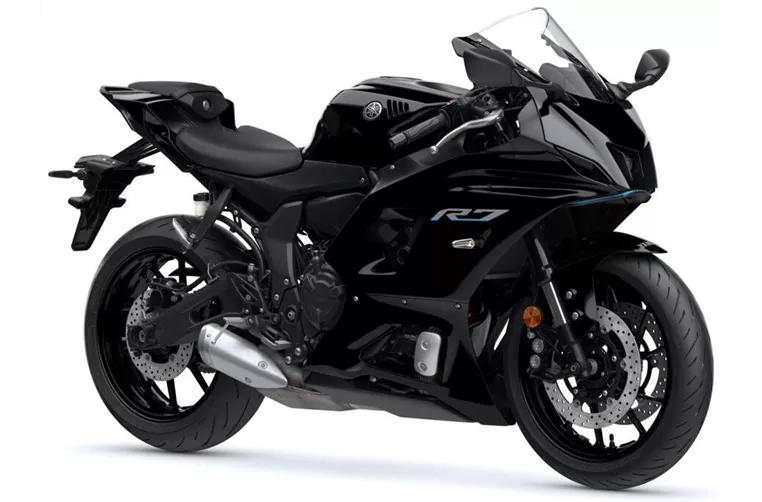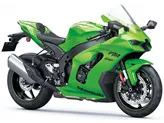Yamaha R1 2010 vs. Yamaha R7 2022

Yamaha R1 2010
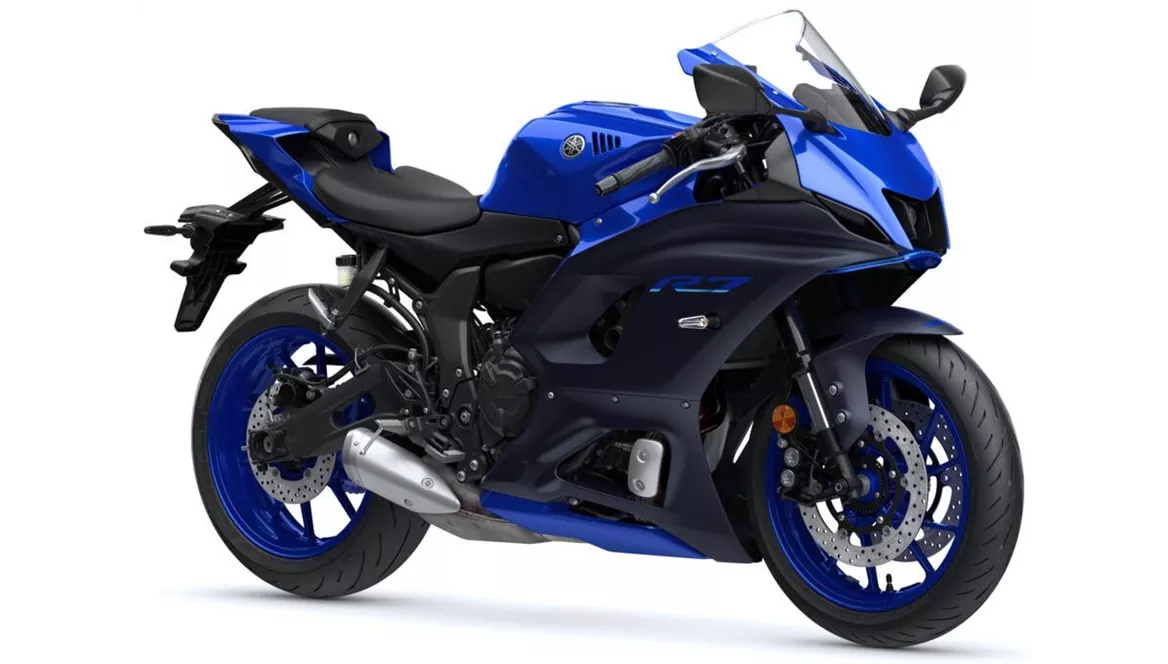
Yamaha R7 2022
Vue d’ensemble - Yamaha R1 2010 vs Yamaha R7 2022
The Yamaha R1 model year 2010 and the Yamaha R7 model year 2022 are both supersport motorcycles from Yamaha, but they have several differences in their technical specifications and features.
Starting with the engine and drive train, the Yamaha R1 2010 is equipped with a 998cc engine with a bore of 78mm and a stroke of 52.2mm. It produces a powerful engine power of 181 HP and a torque of 115.5 Nm. The R1 has a 4-cylinder configuration with 4 valves per cylinder and a DOHC valve system. On the other hand, the Yamaha R7 2022 has a smaller 689cc engine with a bore of 80mm and a stroke of 68.6mm. It generates a lower engine power of 73.4 HP and a torque of 67 Nm. The R7 also features a 2-cylinder configuration with 4 valves per cylinder and a DOHC valve system. In terms of displacement, the R1 has a larger engine size compared to the R7.
Moving on to the suspension, both motorcycles feature upside-down telescopic forks at the front, providing stability and control during rides. However, the Yamaha R1 2010 has suboptimal suspension elements, which may affect its overall performance and comfort. On the other hand, the Yamaha R7 2022 has an adjustable chassis, allowing riders to customize their riding experience according to their preferences.

Yamaha R1 2010
In terms of the chassis, the Yamaha R1 2010 has an aluminum frame, which provides strength and durability while keeping the weight relatively high. On the other hand, the Yamaha R7 2022 features a steel frame, which may offer a different level of rigidity and stability.
Both motorcycles are equipped with double disk brakes at the front, ensuring efficient and reliable braking performance. The front tire width for both models is the same at 120mm, while the rear tire width differs slightly, with the R1 having a wider 190mm rear tire compared to the R7's 180mm rear tire. Both motorcycles have a 17-inch front and rear tire diameter.
In terms of dimensions and weights, the Yamaha R1 2010 has a longer wheelbase of 1415mm compared to the R7's 1395mm. The R1 also has a larger fuel tank capacity of 18 liters, allowing for longer rides without frequent refueling. On the other hand, the R7 has a smaller fuel tank capacity of 13 liters.
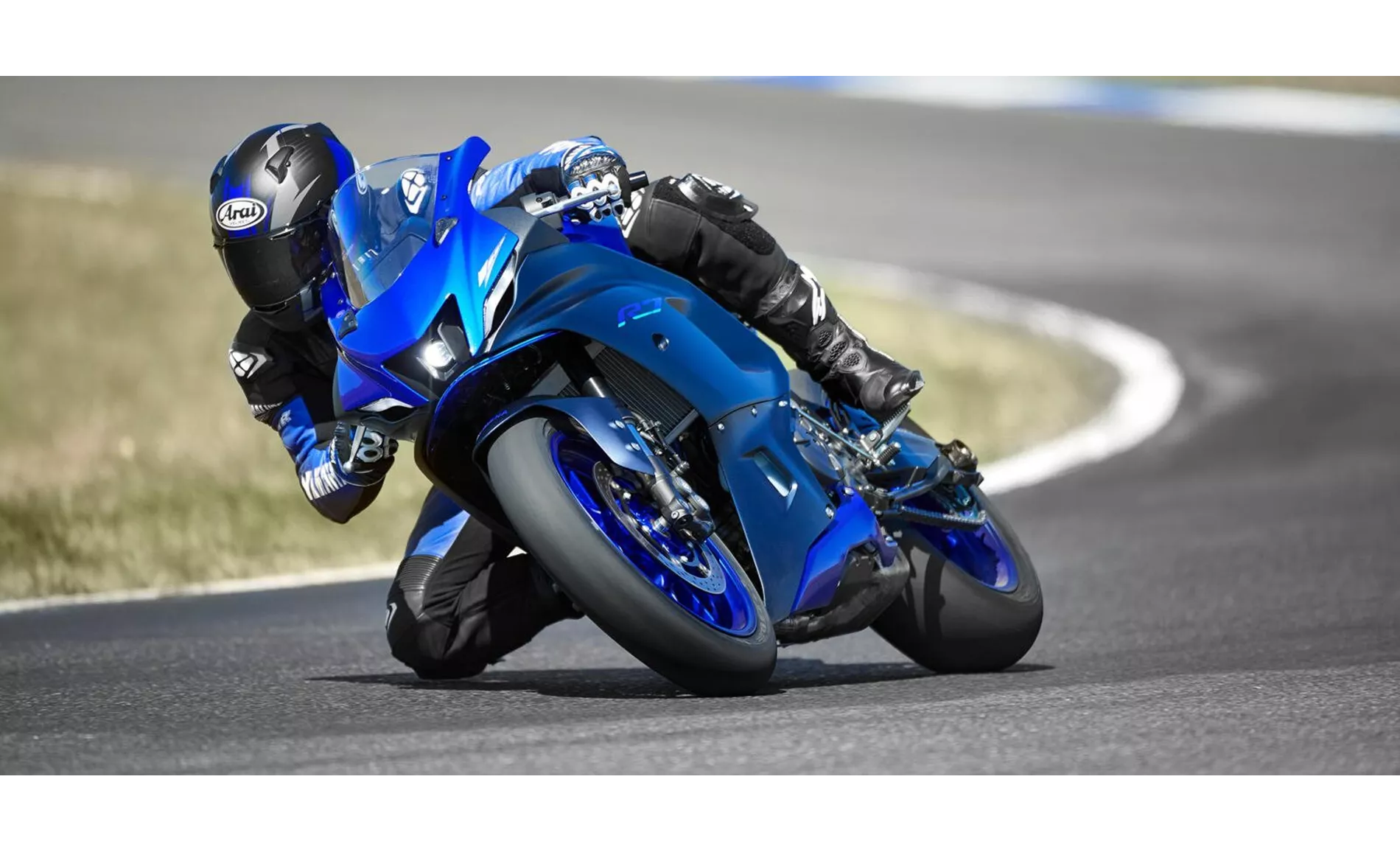
Yamaha R7 2022
When it comes to strengths, the Yamaha R1 2010 is known for its strong engine, sophisticated engine character, optimal braking system, and comfortable seating position. On the other hand, the Yamaha R7 2022 is praised for its CP2 engine with punch from below and in the middle, front-wheel-oriented seating position, adjustable chassis, extremely manageable nature, and good brakes.
However, the Yamaha R1 2010 does have some weaknesses, including suboptimal suspension elements, low peak power, slightly weak traction, and high weight. On the other hand, the Yamaha R7 2022 lacks a TFT display, which may be considered a drawback for riders looking for advanced display features.
In conclusion, the Yamaha R1 2010 and the Yamaha R7 2022 have notable differences in their technical specifications and features. While the R1 offers a more powerful engine and larger displacement, the R7 focuses on a more manageable and adjustable riding experience. Riders should consider their preferences and priorities when choosing between these two models.
Caractéristiques techniques Yamaha R1 2010 par rapport à Yamaha R7 2022
Avantages et inconvénients en comparaison
Avantages et inconvénients en comparaison
Yamaha R1 2010
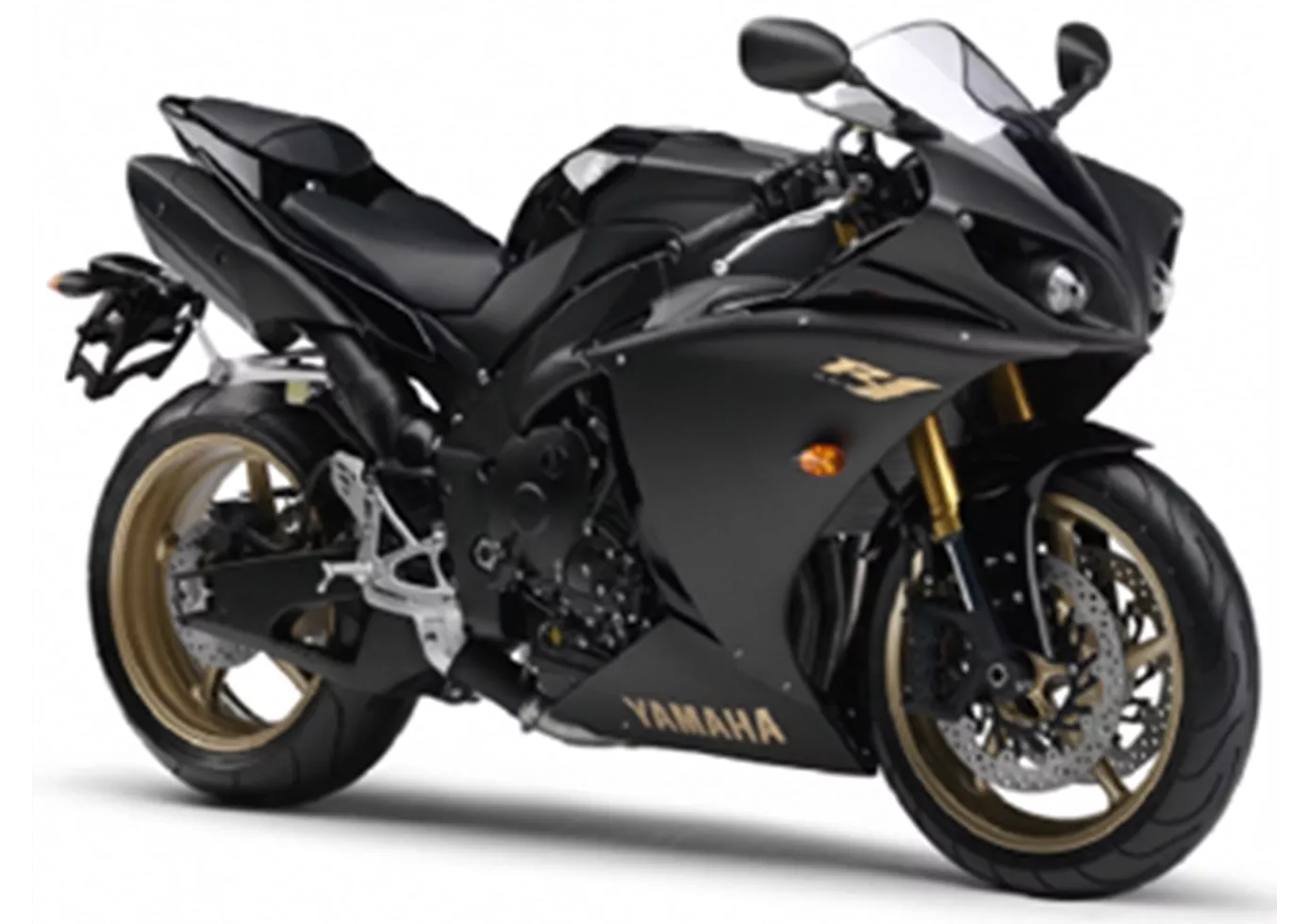
Le moteur actuel de la R1 se distingue par sa sonorité caractéristique, sa réactivité et sa puissance linéaire. En ce qui concerne la puissance de pointe, Yamaha a toutefois dû faire quelques concessions.
Yamaha R7 2022
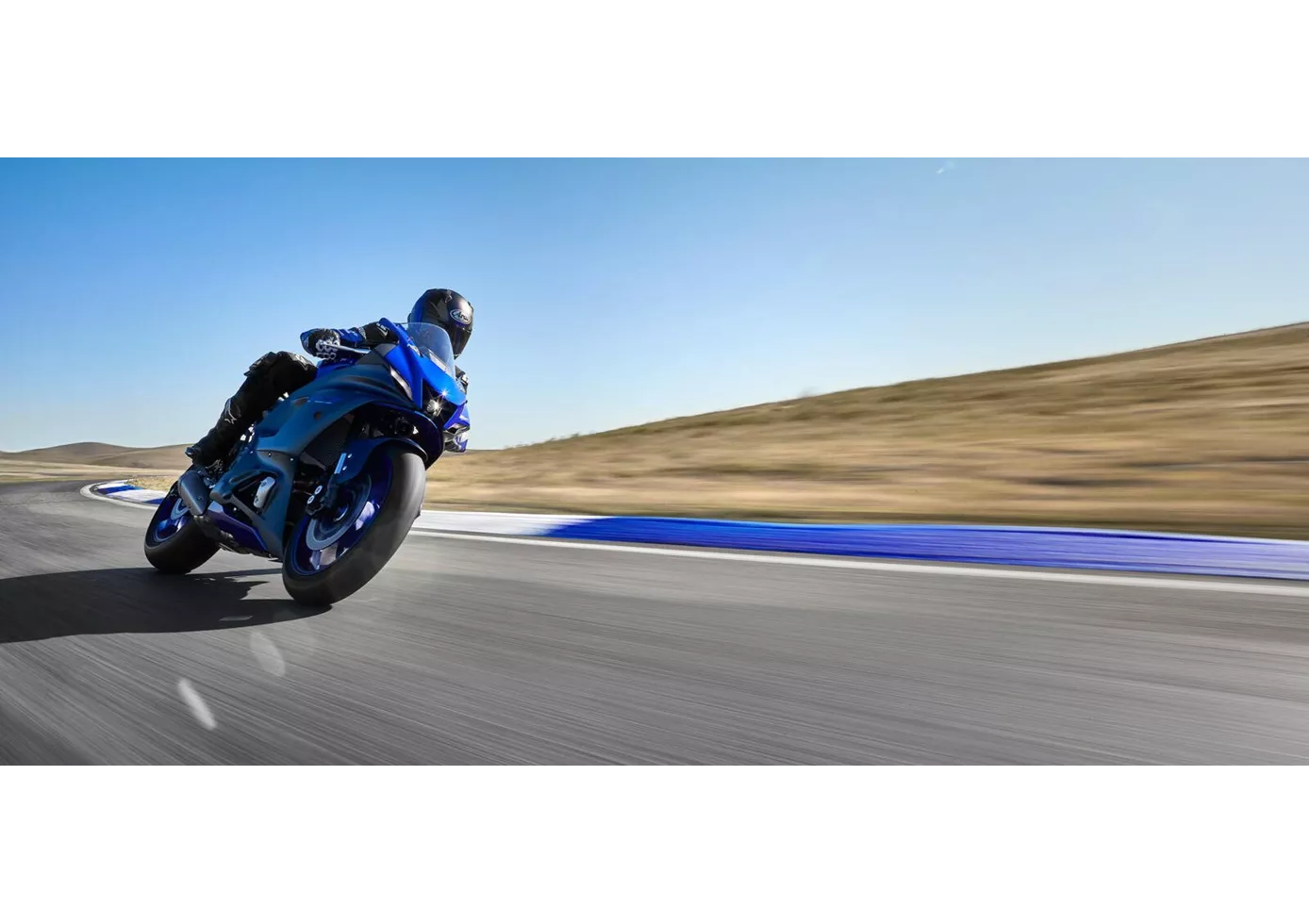
Ceux qui s'attendent à une solution en demi-teinte avec la Yamaha R7 seront surpris de voir à quel point la petite supersportive fonctionne de manière équilibrée. Le moteur d'un peu plus de 70 ch n'a bien sûr pas ce qu'il faut pour défier par exemple l'orgue de vitesse R6, mais c'est justement le moteur avec son punch par le bas qui convient le mieux au caractère. Les composants du châssis sont de très bonne qualité, même entièrement réglables à l'avant, et la maniabilité de la petite grenade est absolument géniale. La position d'assise est correcte, bien moins radicale que sur les vraies supersports, et donc globalement adaptée à la vie quotidienne.
Comparaison des prix Prix moyen du marché Yamaha R1 vs Yamaha R7
There are a few key differences between a Yamaha R1 2010 and a Yamaha R7 2022. In terms of price, the actual average price of a Yamaha R1 2010 is about 11% higher. Compared to Yamaha R7 2022 there are less Yamaha R1 2010 bikes available on the 1000PS.de Marketplace, specifically 5 compared to 44. It takes less time to sell a Yamaha R1 with 53 days compared to 87 days for a Yamaha R7. Since model year 2005 1000PS.de editors have written 80 reviews for the Yamaha R1 and 9 reviews for the Yamaha R7 since model year 2021. The first review for the Yamaha R1 was published on 4/28/2003 and now has more than 3,900 views. This compares to more than 92,800 views for the first review on Yamaha R7 published on 5/18/2021.

